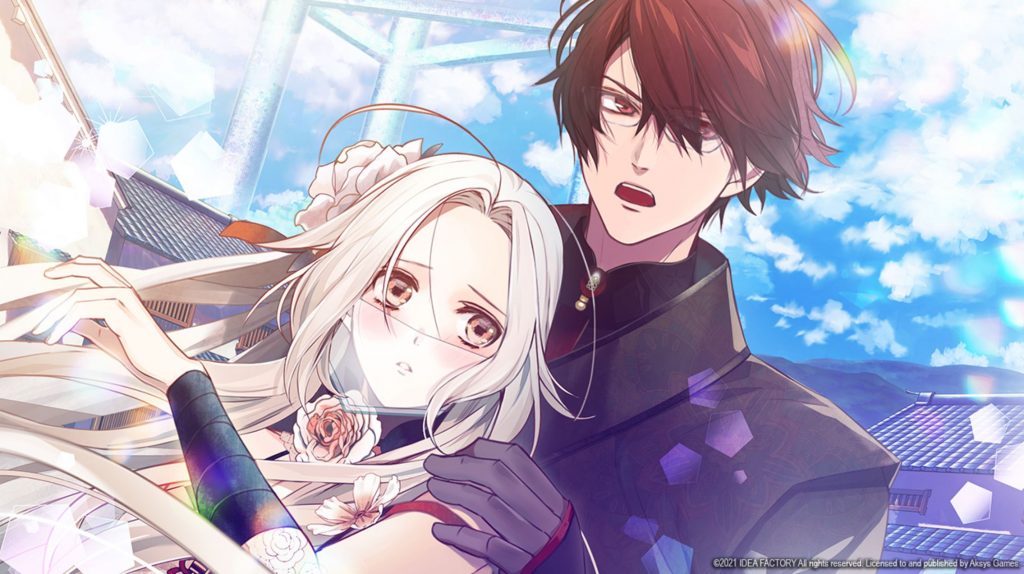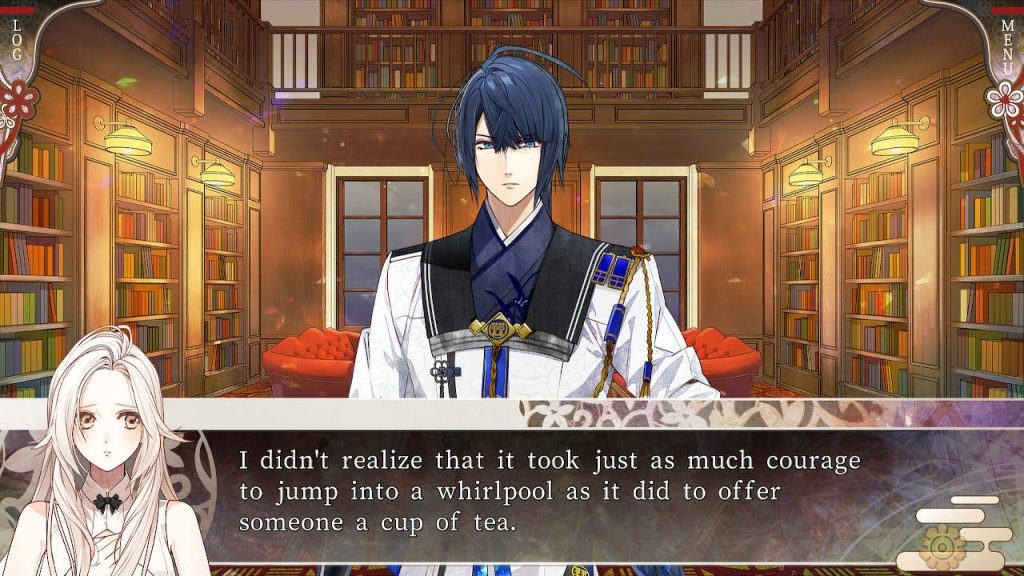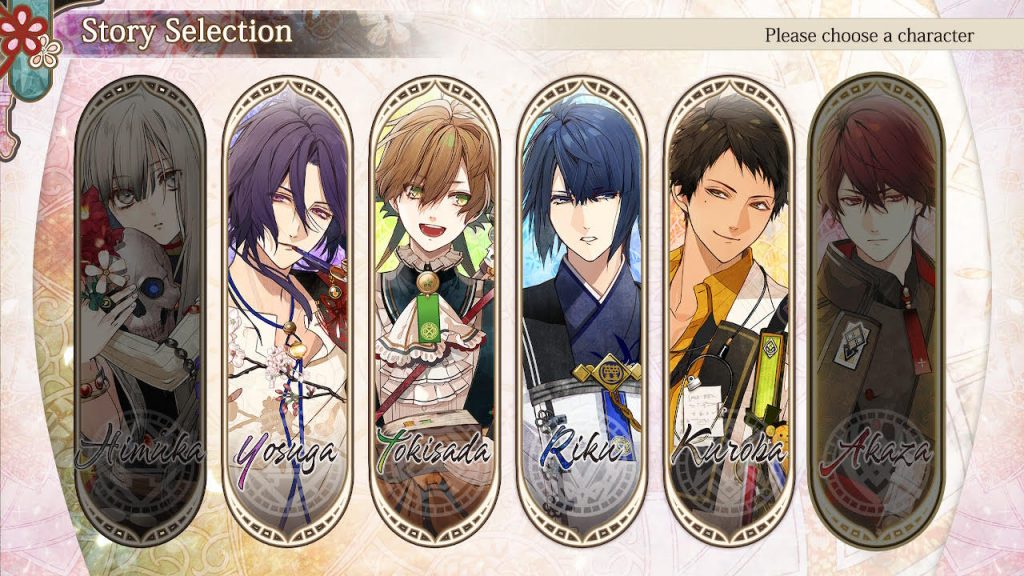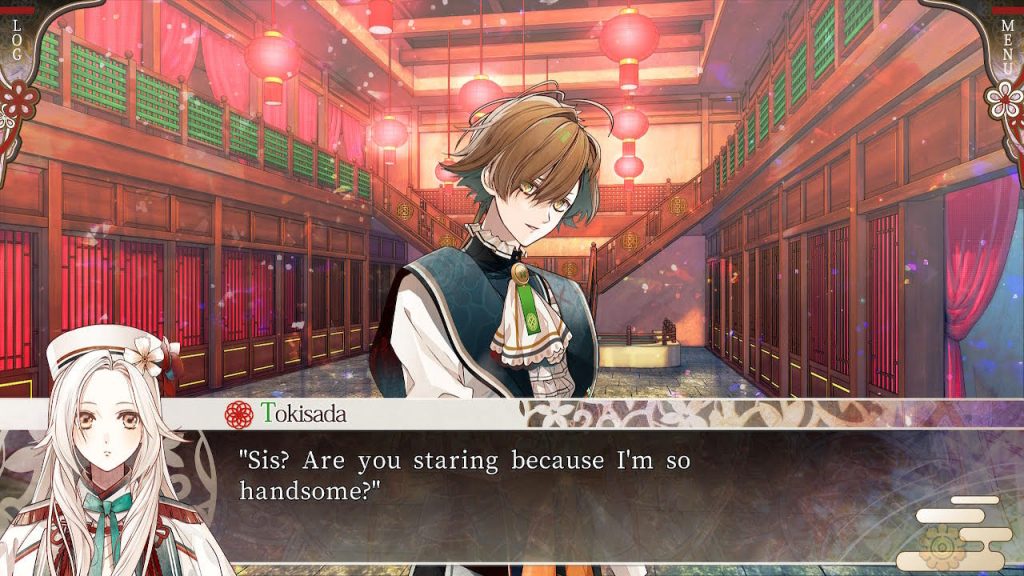Olympia Soirée is the latest in Aksys Games’ lineup of localized otome games from Japanese publisher Otomate, and it comes with an extremely high pedigree. Featuring art from acclaimed otome game artist Satoi (Diabolik Lovers, Ozmafia!!, Nil Admirari), a team including Nil Admiari‘s director Tanabe Wataru and scenario writer Yuma Katagiri, and an all-star cast of voice actors and a compelling fantasy narrative, it’s no wonder this release came with a lot of fanfare!
In Olympia Soirée, you play as Olympia, a young woman who is the last remaining survivor of her clan, and as a result, is the sole bearer of her clan’s duty to perform a ritual dance to keep the sun shining on the world. On her 18th birthday, she is finally able to enter society as a woman of marriageable age. However, the world is governed by a strict class structure, where people of different color clans are segregated and treated differently based on the color they are born into, with “colorless” people and criminals who break the class rules relegated to the underground world of Yomi.
As the last of the White clan, Olympia is allowed not only to travel to any color district, including Yomi, but also choose any suitor to be her husband, no matter their color affiliation. While she urgently wants to find a husband to bear children with and continue the White bloodline, her quest finds her exposed to more and more of the discrimination rampant among the color classes, and she becomes determined to do something to support the people of Yomi and change the world for the better.

Over the course of Olympia Soirée‘s six routes, many aspects of the game’s fantasy world are revealed, such as the fact that women are not allowed to go to school, and the “purest” color classes actually have the lowest birthrates, causing men of high-ranking colors to often go to Yomi and coerce the women there into sex to propagate their own color line. All of this is set against a fantasy backdrop with heavy Shinto motifs, such as the large torii gate being built to appease the local god, and Olympia praying to the sun god Amaterasu to keep the sun shining. There are quite a lot of dark themes in this game despite its colorful appearance, and while I had concerns with how such delicate and difficult topics as racism and classism would be handled by an otome game by a mainstream publisher, I was pleasantly surprised to find it mostly tackled with thoughtful care and consideration.
As a middle-class, white cis woman, I can’t speak definitively on how this game handles the above topics, and that would be a whole article in and of itself. From my perspective, the themes were given considerable attention in each of the routes, rather than just being window-dressing for a story ultimately only focused on romance. Olympia’s growing unease with the state of the world and yearning to find a way she can use her position to change things for the better is a focus throughout, with her relationships with each of the male characters and the revelations that come with them highlighting different aspects of the color-class-focused society, from the situations of the residents of Yomi to the pressures on primary color clan members living on the surface. There is another aspect to the story involving the threat of the world’s light going out, but that takes the backseat until later routes where the connections between everything are finally revealed.
A hefty visual novel, Olympia Soirée‘s common route took me about 5 hours to complete, with each character route averaging about 5 hours, as well. Interestingly, the common route doesn’t include any choices, instead offering you a simple portrait-based selection screen at the end where you choose which character’s route to play. At first, only four characters are available, with Himuka unlocking after the first four’s routes are completed, and Akaza’s unlocking after Himuka’s is completed. Generally, the first four can be played in any order, but the recommended order from the game’s scenario writer is Riku, Tokisada, Yosuga, and Kuroba, followed by Himuka and then Akaza.
As with most otome games, there are good endings and bad endings for each character. In this case, there are two bad ends and one good end, with an additional short side story that unlocks after completing a character’s good ending. While rape is a topic that comes up frequently in the game due to the themes involved, I think it’s important to mention here that some of the bad ends include more direct depictions of drugs, rape, and most shockingly, rape involving an underage character. These endings come up very suddenly and feel like they have just been added for the shock value, so if you want to avoid the aforementioned content, I would advise skipping them altogether. Luckily, it’s very easy to avoid the bad ends by quick saving at every choice and making sure you choose the “good” option that turns the meter to the left, or by following a guide.

In terms of the character routes themselves, this was one of the rare occasions where I found myself most enamored with male characters that didn’t appeal to me as much in the common route, namely Akaza and Riku. Both are very serious and curt, but they warm up to Olympia over the course of their routes, with Riku’s internal conflict, in particular, opening his route up to some great romantic tension. Meanwhile, it turns out Akaza is famous for his cooking, particularly his smoked meats, and I found it hilarious that Olympia’s desire to try it was brought up multiple times during his route. His story and romance seem the most fleshed out of all of the characters, which makes sense as his narrative really wraps up all of the loose ends of the story.
Adding to the overall presentation of the game is a standout soundtrack with Japanese-inspired motifs mirroring those in the story, and a solid localization on the part of Aksys Games. After noticing numerous typos and errors in Cafe Enchanté, I’m very pleased to say that there were very few issues in Olympia Soirée‘s script. Notably, there is voiced dialogue in the menus and additional dialogue that unlocks after beating certain endings, and the game has been patched since release to include subtitles for all of this audio. But while the sprite artwork and many of the CGs are gorgeous, you can tell that some of the CGs didn’t get as much care as others, with awkward posing and fewer details missing the mark when compared to Satoi’s character art.
Despite my apprehension with how the game would handle its premise, I found myself drawn in by the world and characters right from the get-go. Olympia starts off as an expressionless “doll” who has never interacted with the outside world, but she quickly grows into an inquisitive, strong-willed woman who is determined to do what is right not just for her clan, but for herself and the maligned groups of people in the world. I didn’t think I’d enjoy the focus on marriage and bearing children as the motivation for Olympia to quickly find a husband, but for the most part, I thought it was handled in an engaging way, with the characters, relationships, and story revelations in each route making me appreciate all six of the routes even if the romance wasn’t always my cup of tea (Tokisada, please stop calling Olympia “sis”!).
One other issue I had with Aksys Games’ previous otome game release, Cafe Enchanté, was the ending. Luckily, Olympia Soirée had a very satisfying ending that didn’t leave a bad taste in my mouth. That, combined with a more engaging story and lengthy character routes that allow each character plenty of time in the spotlight, makes Olympia Soirée my preferred of the two titles. Not only that, but it’s now up there with some of my favorite otome games available in English! If you’re comfortable with the darker themes and potentially disturbing bad ending content, I strongly recommend adding Olympia Soirée to your otome game library.
Disclaimer: I have an ongoing business relationship with Aksys Games. A game code was provided for the purpose of this review. All opinions are my own.


